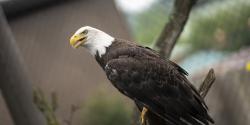The Columbus Zoo and Aquarium and The Wilds support and participate in studies contributing to science.
Specifically, we focus on science that leads to advancements in animal management and wellbeing, conservation biology, demographics, ethology, genetics, microbiology, nutrition, pathology, physiology, reproduction, ecology, veterinary medicine, and conservation education.
With years of experience and having access to some of the world’s rarest species, wildlife experts at the Columbus Zoo and The Wilds play an important, direct role in helping to protect these species’ future. In addition to leading scientific initiatives in the field and publishing information through peer-reviewed scientific publications, the strong, trusting bonds shared between the animals and their care teams help us provide valuable data collected at our Zoo. We share this information with other wildlife organizations, universities, and conservation partners to benefit the animals in our care and in their native ranges.








